Massachusetts Home Inspections YOUR INVESTMENT IS MY CONCERN

Powder Post Beetles
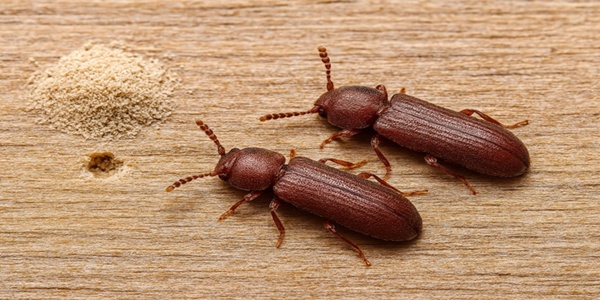
Powderpost beetles get their name from their ability to turn wood into a fine, dust-like powder that closely resembles sawdust. Infestations often begin when lumber is improperly stored—either in storage yards or at construction sites. During this time, beetles can burrow into the wood to lay eggs, setting the stage for an infestation that may go unnoticed until structural damage becomes apparent.
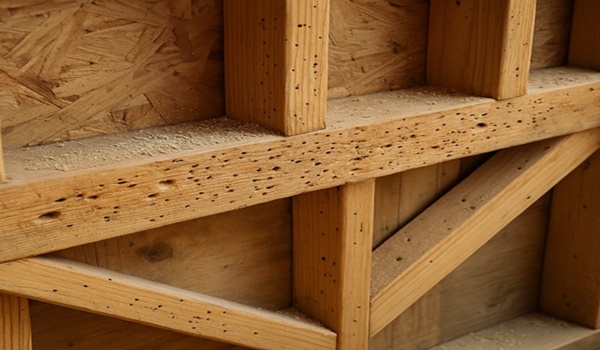
Adult powderpost beetles lay their eggs in the cracks and crevices of unfinished wood or beneath the bark of tree trunks. Once the eggs hatch, the larvae begin feeding on the wood from the inside out, tunneling through it in search of nutrients. These tunnels often follow the softer parts of the grain and may occasionally be visible near the surface—but more often, there are no outward signs of their activity.
As they burrow, the larvae leave behind tunnels packed with a fine, powdery sawdust known as frass. Eventually, they stop close to the surface, where they mature into adults. Typically around June, the adult beetles emerge by boring small, round exit holes—ranging in size from a pinhead to the diameter of pencil lead. These holes may be accompanied by small piles of powdery frass, which can continue to trickle out even after the infestation has ended.
Powderpost beetles typically follow a one-year life cycle, with adult emergence occurring just once annually. However, the larval feeding phase can last several months, silently damaging the wood during that time.
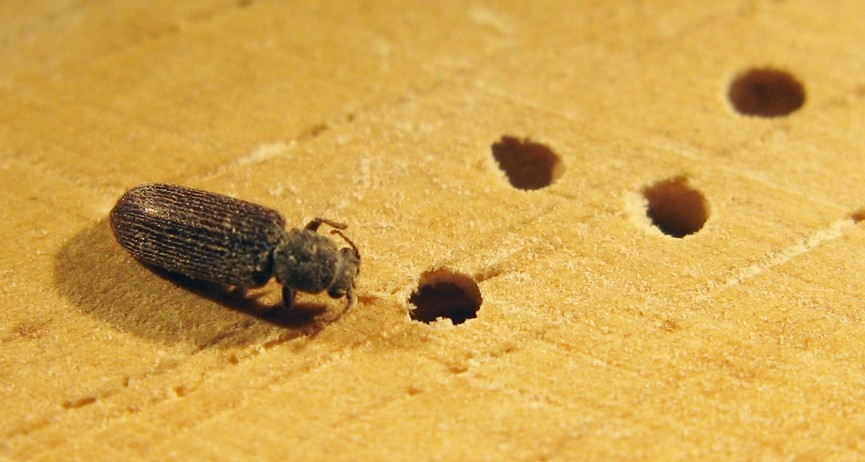
POWDER POST BEETLE PREVENTION
As previously mentioned, controlling excess moisture is essential, and every effort should be made to eliminate its source. However, it's important to note that wood dries slowly, and reducing moisture alone may not be sufficient to stop a powderpost beetle infestation. Prompt treatment is critical—delaying action can lead to increased and more costly damage over time.
If significant powderpost beetle activity is compromising your home’s structure, several chemical treatment options are available. However, these treatments are generally ineffective on sealed or finished wood, as they cannot penetrate the surface. In severe infestations, whole-house fumigation (or "tenting") may be necessary, though this method can be expensive and disruptive.
EXCESSIVE POWDER POST BEETLE INFESTATION
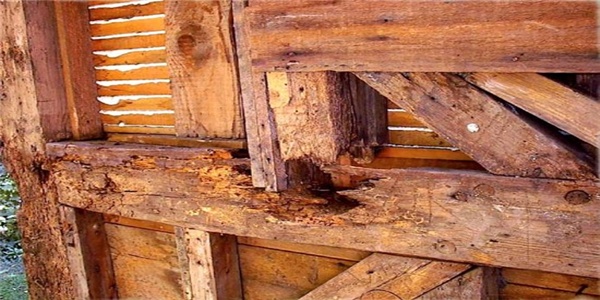
Following treatment, a qualified carpenter should evaluate the structure and repair or reinforce any damaged components as needed. Before pursuing any major intervention, always consult a licensed exterminator—some infestations may be minor and not require aggressive measures. When I encounter limited damage that doesn’t compromise structural integrity, I typically advise clients to monitor the area for any signs of continued activity before taking further action.
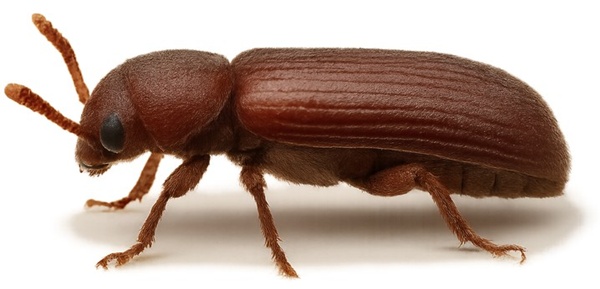
For homes with a crawl space or dirt-floor basement, I recommend covering the ground with 4–6 mil polyethylene sheeting to help reduce moisture levels. This barrier not only limits moisture but also makes it easier to detect signs of infestation. Be sure to regularly check the sheeting for fine sawdust (frass) falling from the floor joists above, as this may indicate active powderpost beetle activity. Also, be sure to inspect the flooring and base moldings beneath interior wood walls. Small piles of sawdust may indicate previous beetle activity, but they don’t necessarily mean the infestation is still active.
To maintain long-term protection, schedule yearly inspections with a certified, licensed pest inspector.
Here is what my clients have to say about my home inspection services:
Press F5 (on your keyboard) for additional testimonials
I recently accompanied David Valley during his inspection of the house my son was buying. Having purchased a number of houses during my lifetime, I considered myself very knowledgeable and thorough. However, he surpassed me greatly, picking up on important details I would have missed. He frequently suggested ways on how something could be fixed or improved. He displayed broad knowledge of house structure, heating and cooling system, plumbing, electrical, etc. David is the best home inspector I have ever employed and I recommend him implicitly. Thank you for a great home inspection.
Sincerely yours,
Hartmut S.














